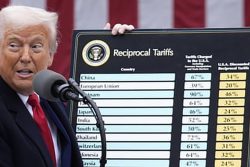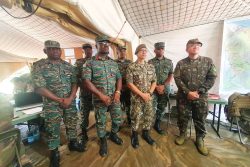“Water in Guyana can be also deemed as a liability instead of an asset,” Agriculture Minister Robert Persaud said on Tuesday in an address at an event held to mark International World Water and Meteorological Day. Interestingly, the day was being observed under the theme ‘Responding to the Challenges of the Weather and the Role of Water Management’; two areas in which Guyana appears to be floundering.
Minister Persaud confirmed that there is a lack of knowledge when he stated that in January “we” – presumably he was referring to those in authority at the Ministry of Agriculture and its sub-agencies – “thought that the conservancy would not have enough water to sustain us.” With all that has happened over the past five years that Mr Persaud has been Minister of Agriculture, it is preposterous that “we” are still guessing and thinking when it comes to weather forecasting and water management.
Of course the prevailing conditions – intense rainfall and extreme spring tides – are a result of La Niña; there is no avoiding that. However, the impact might have been less severe had there been adequate planning. In 2009, the $550 million Doppler Radar Tower was commissioned and it was expected that it would have provided the forecasting that would allow for at least some preparation for extreme weather. That has not happened, though there has been training in the use of the Doppler with the minister himself pointing out that an Indian expert had provided same here.
However, even without the Doppler, information freely available on the internet since January on the World Metereological Organisation website revealed that, “Model predictions indicate a continuation of this La Niña at least through the first quarter of 2011, and possibly into April or even May. Beyond that time, the evolution of El Niño/La Niña cycle is uncertain.”
In a letter to this newspaper last year, engineer Charles Sohan chided the Agriculture Ministry and the National Drainage and Irrigation Authority (NDIA) over poor water resources management. In response, NDIA Corporate Secretary Omadatt Chandan accused Mr Sohan of attacking the agencies and cited huge sums of money – in excess of $83 million in fact – which he said were being spent to mitigate the dry weather phenomenon El Niño, which was in effect at the time and which had also been predicted and could have been prepared for.
The type of uncertainty still evident in Minister Persaud’s ‘water is a liability’ statement coupled with the fact that La Niña has caused almost the flip side of the effects felt by El Niño prove Mr Sohan’s point. Not that it needed proving.
Anyone looking at how and when maintenance of waterways is done would have come to same conclusion – without the benefit of engineering experience. Not only is maintenance poor, but remarks made on Tuesday by contractor for the Amaila Falls access road Fip Motilall reveal that weather conditions are not taken into account when massive infrastructure work is planned. Motilall said that prevailing La Niña conditions had affected work on the project and if the rain continued he would miss the August deadline. Other examples are the stalled bridge works along the East Bank Demerara corridor – the only route to the Cheddi Jagan International Airport – particularly the bridge at Friendship that greatly inconvenienced scores of people earlier this week. Obviously there is no networking between the Ministries of Public Works and Agriculture as regards the best time to carry out such rehabilitation. But maybe that too can be blamed on La Niña.









